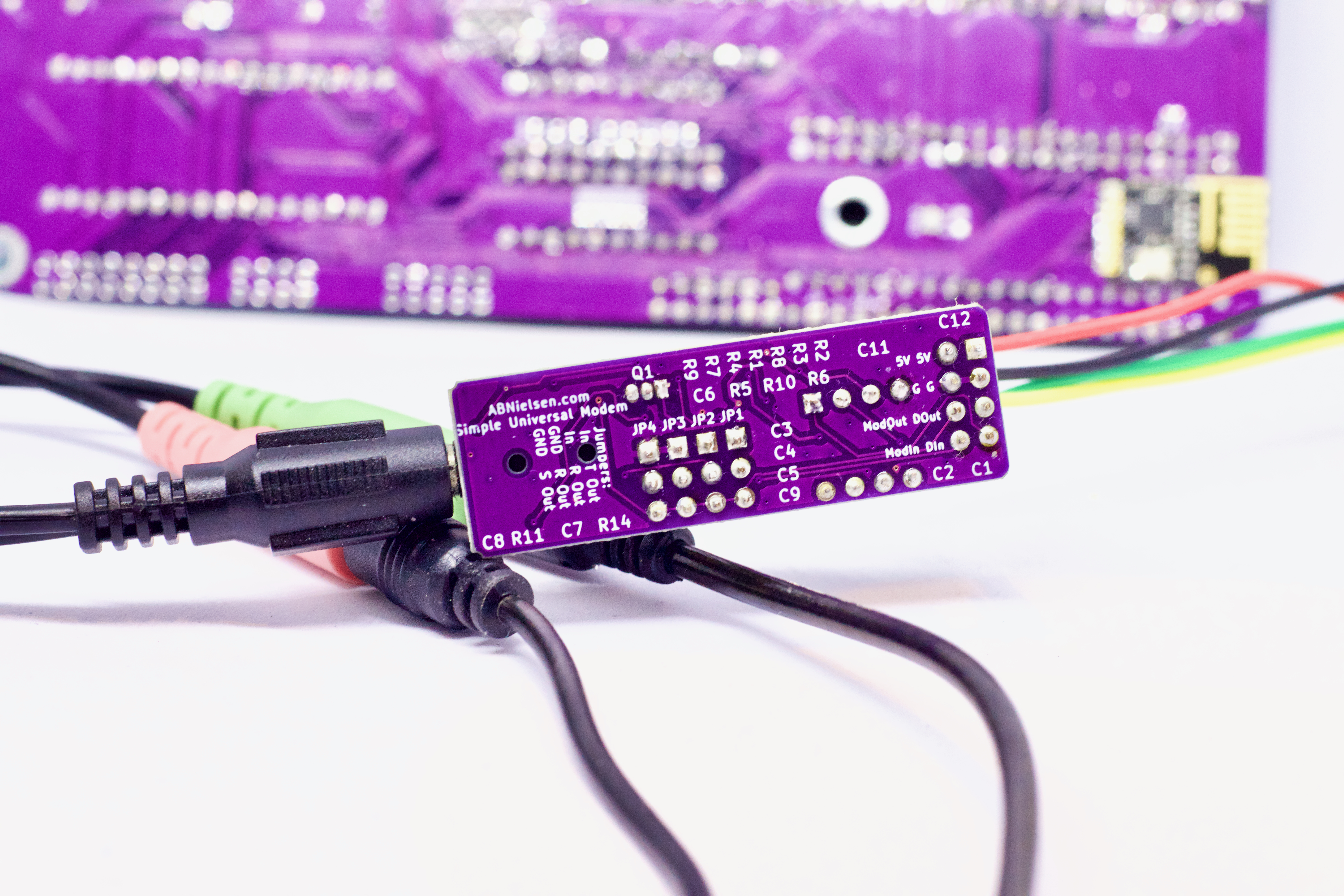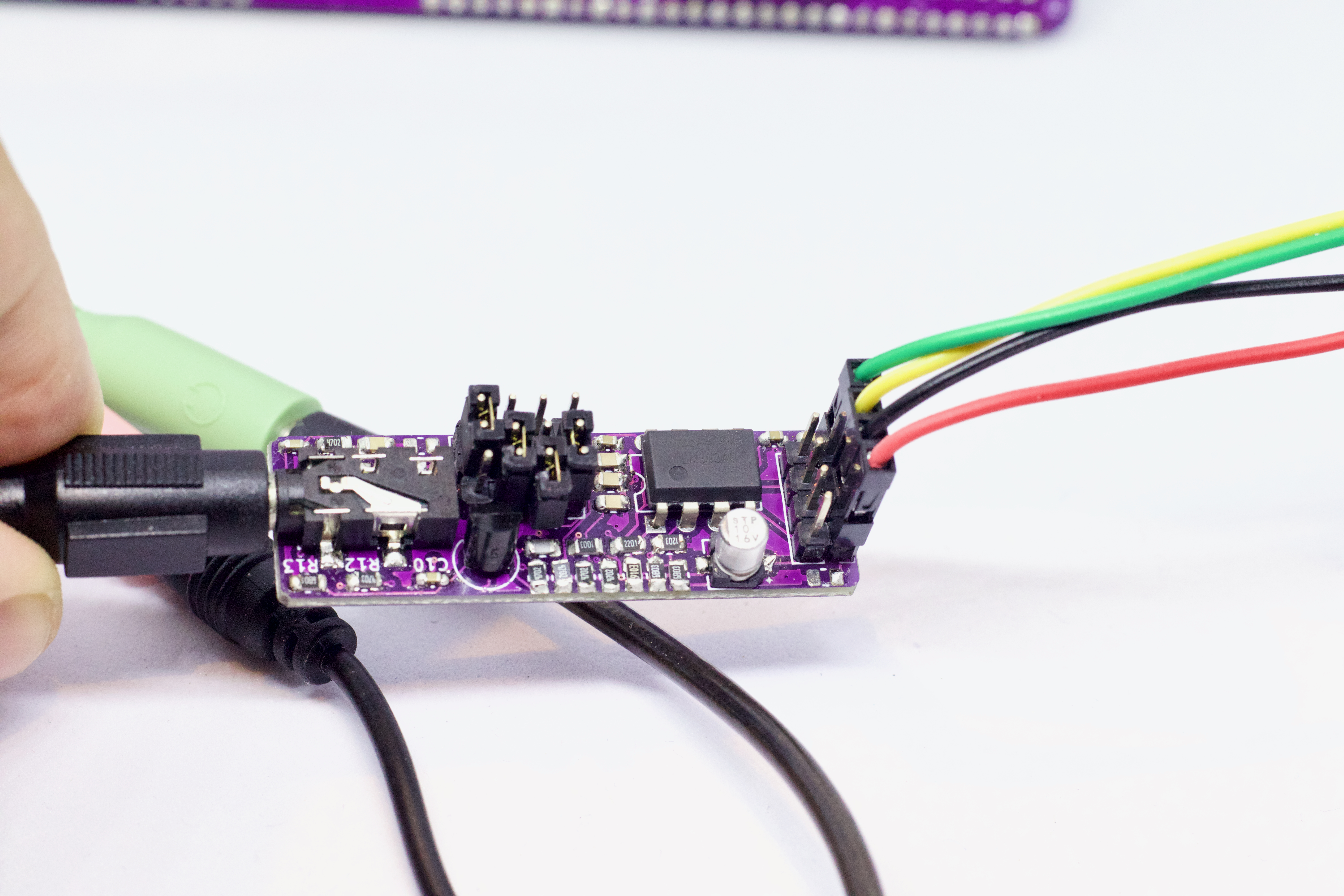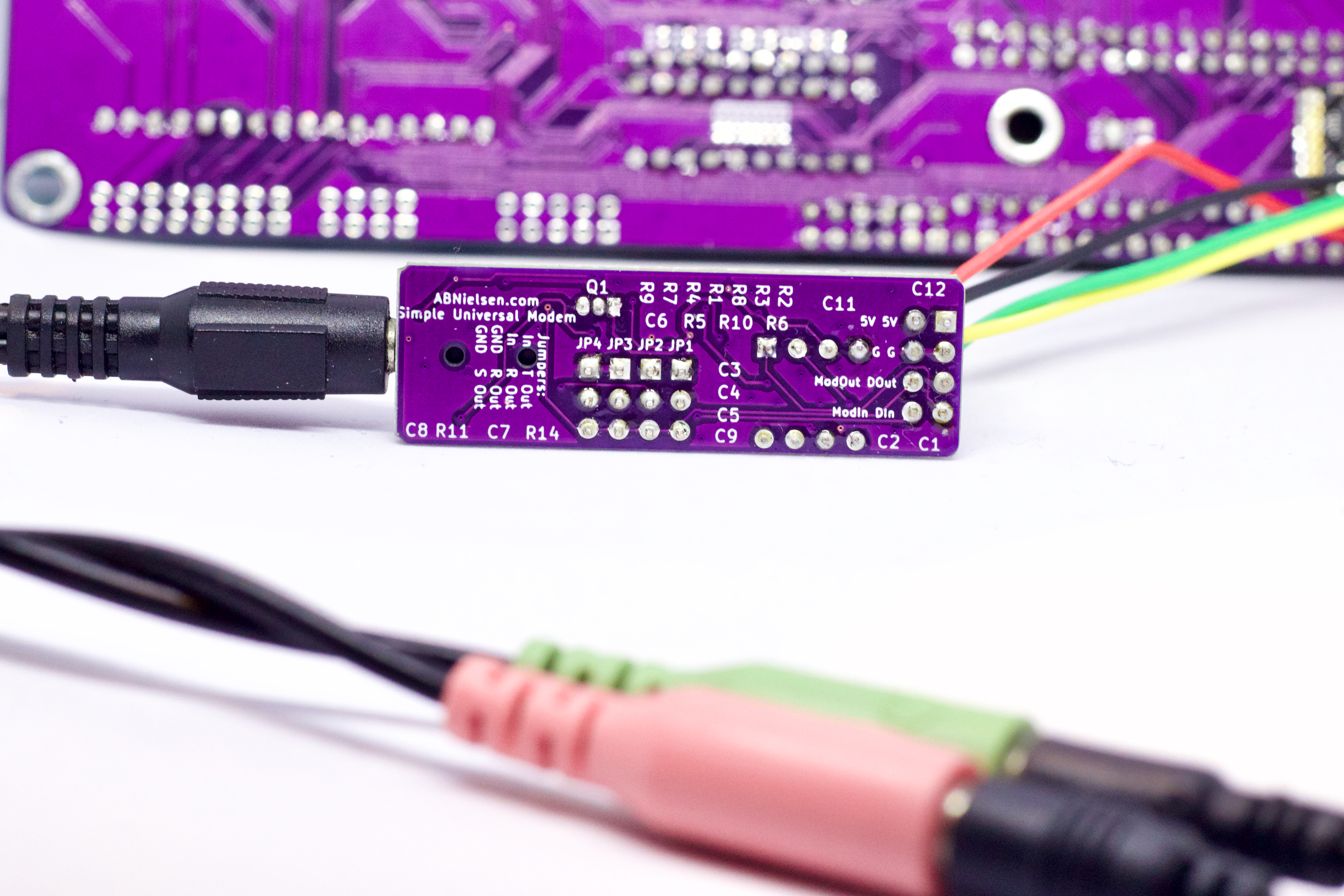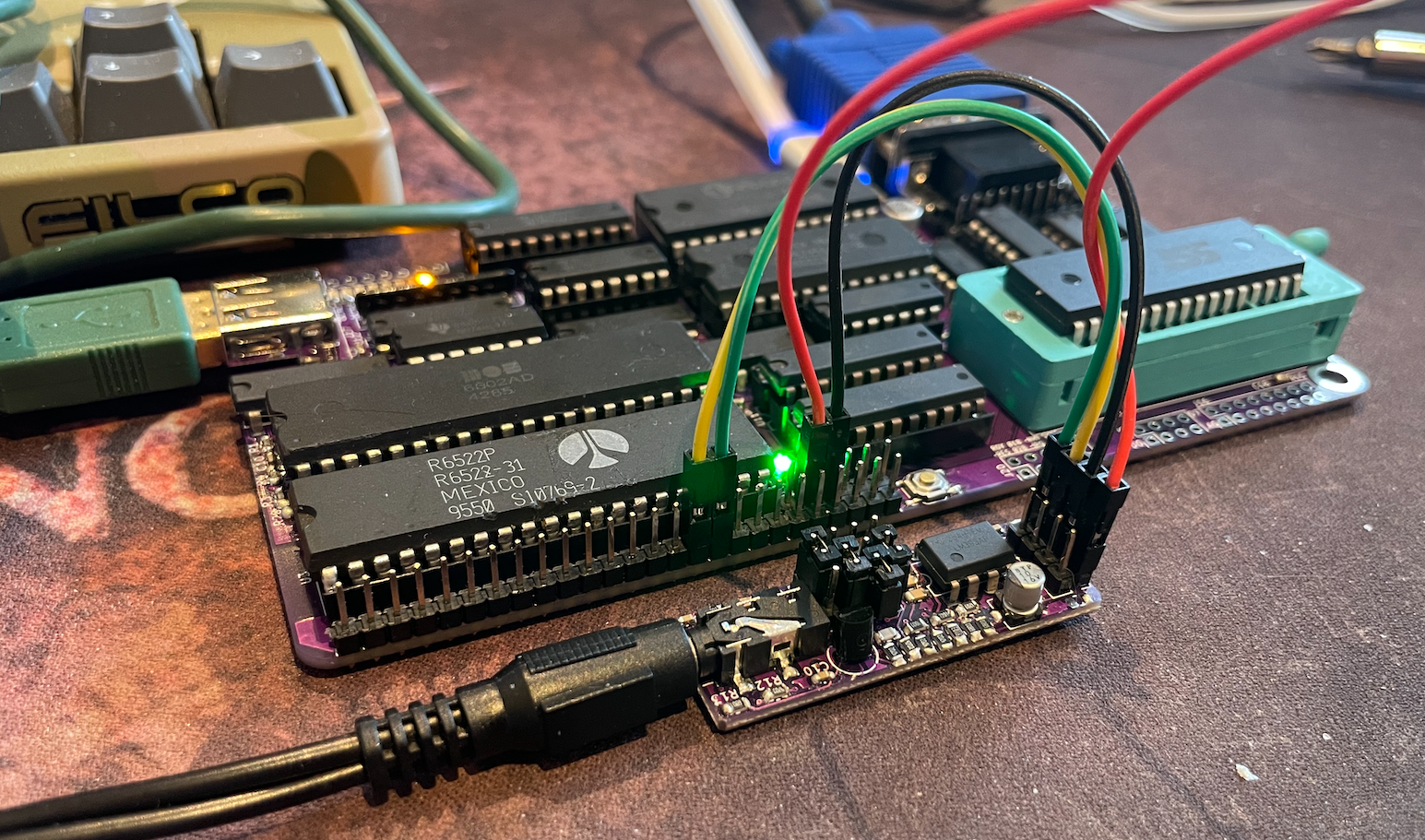-
PCBs for sale
01/16/2024 at 19:42 • 0 commentsThe #Simple Universal Modem got a reasonable Top 50 finish in the 2022 Hackaday Prize but I didn't have a way to sell and ship PCBs.
Thankfully, now I'm shipping enough #65uino kits that there's no extra hassle with also offering PCBs for the modem.
Only PCBs available for now (price 2€ + shipping) - I can make full kits available on request.https://www.imania.dk/index.php?cPath=204&sort=5a&language=en
-
PCBs for sale
01/16/2024 at 19:42 • 0 commentsThe #Simple Universal Modem got a reasonable Top 50 finish in the 2022 Hackaday Prize but I didn't have a way to sell and ship PCBs.
Thankfully, now I'm shipping enough #65uino kits that there's no extra hassle with also offering PCBs for the modem.
Only PCBs available for now (price 2€ + shipping) - I can make full kits available on request.https://www.imania.dk/index.php?cPath=204&sort=5a&language=en
-
Been there, done that, T-shirt's on its way!
10/22/2022 at 07:23 • 0 commentsIt really almost felt like cheating when I heard last week's Hackaday podcast and Elliot chose 300 baud KCS for the "What's that sound?" segment. I already had the equipment to do the decode in hardware on my desk.
If it wasn't for the fact that my code was still set to 8 bits instead of 11 bits, it would've been too easy but I took it as the final push to get the source code finished.
And behold - the message "READ MORE HACKADAY" appeared(plus a few control characters) and to my surprise I also won the segment competition after sending in the answer.. And soon I'll have a Hackaday T-shirt to show for it!
If you also want the ability to decode random nerdy messages on podcasts, then you can go right ahead and build this project.
-
New video posted.. Finally!
10/20/2022 at 20:52 • 0 commentsI think it's actually the first time I had a PCB prototype made and nothing needs bodging, but it was certainly the right time for everything to work out. With the competition submission deadline moved up, my other project stealing my attention and... life... it certainly was a welcome surprise that it just worked.
The video itself required me to acquire some new skills in Keynote as I struggled to find a good way to express the relationship between the hardware and the waveforms with still photos and video sequences. I'm not sure "skills" is the right word for the results but I hope the general idea of what I tried to accomplish came across.
Either way, tell me how you think it went :)
-
New photos, don't they look nice?
10/18/2022 at 10:17 • 0 commentsI finally got around to taking some new photos of the project and I hope they show exactly how tiny the board is compared to my #ABN6502 SBC R1 - actually the whole board is smaller than the 40 pin DIP packages of the 6502 and 6522's.
![]()
I guess it could be even smaller if I'd skipped the configuration jumpers and the extra row of I/O pins - you don't really need the ModIn/ModOut pins or the extra GND/5V pins - but maybe they will be handy some time. You never know when you'll need an extra pair of power lines.The project photos only allow 6 photos < 5MB so I've uploaded all the high resolution photos I have to the project files.
![]()
![]()
-
The curious case of the orphan APRS code
10/17/2022 at 09:20 • 0 commentsEven though I finally implemented the final piece of the Kansas City Standard code with the start and stop bits, I have to admit I have left in some orphan code in the modem driver.
A while back I had to see if there was any way this could be used for the ham operator on a budget’s dream – APRS decoding.
APRS is a global packet radio service that let’s radio amateurs send small messages, often with location information, and have them relayed to the intended recipient, and as luck would have it the protocol isn’t that far off from KCS at 1200 baud – except that the encoding is NRZ and it uses the improved frequencies of 1200 and 2200, meaning less problems with harmonics.
Though the frequencies are different, they’re still close enough that we don’t need new filters for transmission/modulation – and currently the Simple Universal Modem doesn’t rely on any filters on the demodulation side.But that’s awesome, right?
Well yes, but.. Those filters are missing on the demodulation side because the modem expects a clean audio signal – and certainly not the pile of RF noise goo that comes out of a Baofeng.
The issue here is that the modem works by detecting every zero crossing with a certain margin provided by the hysteresis and that amount of margin is easily overcome by only a tiny amount of static noise.
Any noise strong enough to cause a zero crossing + hysteresis will garble up the data with no real way of recovery. As far as I can tell this problem is hard to overcome without a signal to noise ration that is far far better than what’s plausible on the RF bands.But what about transmission? That’s not a problem, right?
Well… It kinda is too. If we open an APRS packet in Audacity you might notice something rather peculiar. To me at least..The frequencies change at different phases of the waveform! Remember those “improved” frequencies? Well, it turns out that when your baud rate isn’t a multiple of your frequency, you run into situations like this. There’s simply not enough room in one 1200 baud bit length for two waves of 2200Hz, so the wave changes its frequency at random places.
Since we’re using T1 and PB7 to generate the initial square wave, which means we can only change the frequency at a zero crossing, there’s simply no way to replicate this behavior.
Maybe the receiving station could still decode the packet if we rounded to the nearest zero crossing but that would, sadly, still be out of spec. On the demodulation side this is also a bit of a problem since the time between zero crossings vary depending on how much of the wave was snipped off – and this propagates until the NRZ encoding does it’s job and limits the amount of marks allowed in a row… But well after the damage has been done to our attempts at frequency detection. I did manage to get around this – rather ungracefully – by compensating, based on the previous bit. Not great, not terrible.So.. I decided to spend my time elsewhere and postpone the pursuit of a super cheap packet radio for another day.
I might pick it up again but I’m almost hoping someone will pick up the torch and submit a pull request.And that was the story of the orphan APRS code in the Simple Universal Modem repo.
-
Things are going in the right direction!
10/16/2022 at 14:14 • 0 commentsThis weeks Hackaday podcast inconveniently gave me some extra homework, pretty close to the Hackaday Prize submission deadline.
Since the deadline was moved up, I now only have a week to finish up the submission video and make sure I have all the technicalities in order. Last week I got the new PCBs in the mail, together with the boards for my #ABN6502 SBC R1 and magically everything seems to work as I intended.
But back to the podcast homework - "What's that sound?" certainly sounded familiar to me so I got a reminder that I hadn't finished the code to send and detect the start and stop bits that I lazily skipped over when getting it running the first time. Whoops!
I'm not going to spoil the podcast competition but I certainly had a feeling that I would need to finish that piece of code eventually - and at least now it is ready to handle start and stop bits as well.We will see if my guess for this week's sound was correct when the next podcast airs :)
Later in the coming week I'll - hopefully - post the required 2-5 minute video about this project, as well as some photos of the finished PCB.
-
It even works with Microsoft BASIC!
09/21/2022 at 14:53 • 0 commentsIt's hard to make a big sensation from something that does a seemingly simple thing, but I have to say I'm really happy with it - it does what it does and does it well!
However, that does mean you have to give it a great big "think" to improve it. I've had suggestions like changing the resistor values to improve the bias level of the LM393, since the range of the comparator actually isn't GND to VCC like you'd expect but only GND to VCC-1.5V. Luckily that didn't even involve changing the PCB.
Hopefully I can at improve it a bit more without adding to the cost - it really is supposed to be as cheap as possible.
But speaking of PCB - I haven't even ordered it yet, since I'm hoping to order it together with my new #ABN6502 SBC R1 PCB's(they need a few of the actual R1 features moved to the PCB instead of floating in free air :))
For now I've moved it to a tiny little breadboard and featured it in my new video about running BASIC - the Simply Universal Modem play's a big part as I couldn't save and load without it. And it actually worked perfectly the first time!
Check it out! :D
-
Demo video out!
07/21/2022 at 04:51 • 0 commentsI'm super happy to say the long-awaited video of my Simple Universal Modem is now out on Youtube.
You will see me demonstrate the modem in different ways and talk a bit about how howbrewers started using tape in the 1970's and all the details you'll need to make your own is right here on hackaday.io -
You can now make your own!
07/16/2022 at 20:50 • 0 commentsKicad files, along with a zip of the gerber files, and schematic as PDF has now been uploaded to Github.
I haven't ordered boards yet, but if you want, you now have a chance to beat me to it! (Goes without saying the PCB layout is untested)
 Anders Nielsen
Anders Nielsen



